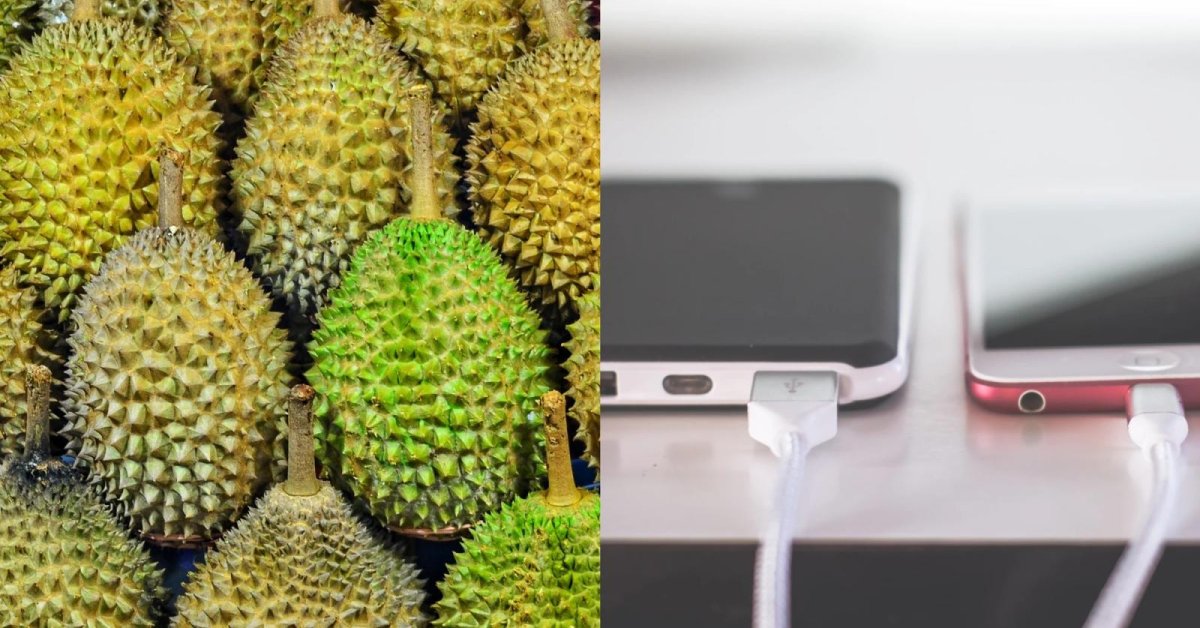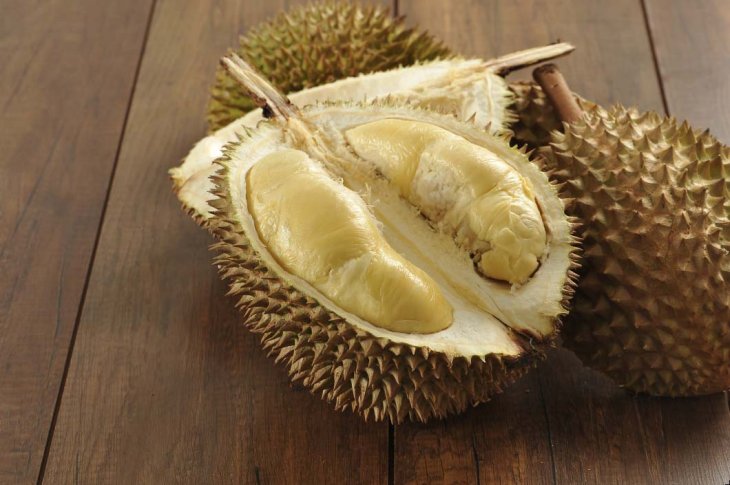Here Is How You Can Charge Your Phones With The Terribly Pungent Durians
Aadhya Khatri - Mar 03, 2020

Durians have been proven to be key to the next cutting-edge super-fast charging technology, which can power up anything from a Tesla car to an iPhone
- Tesla Robotaxi Finally Hits the Streets: $4.20 Rides That'll Make You Hold Your Breath
- Tesla vs Zoox vs Waymo: Who would win?
- Elon Musk Eyes Indian Market: Tesla’s Next Big Move?
Durians, forbidden on public transport in Thailand, Japan, and Hong Kong for its foul smell, actually tastes as good as it less pungent cousin, the jackfruit.
However, taste and smell aside, the two fruits have been proven to be key to the next cutting-edge super-fast charging technology, which can power up anything from a Tesla car to an iPhone.
If you are not familiar with durians, trust us when we say that fruit stinks and not just stinks, it smells like a dead body to anyone who cannot eat it. However, to someone who can, it smells exactly like heaven.

The smell does not obviously prevent an associate professor of the University of Sydney, Vincent G. Gomes to present a way to extract biowaste from jackfruit and durians to create a lightning-fast electric charger.
No, manufacturers will not cut up the fruits to pieces and stuff them into your phone’s battery. What the scientists did was to recycle the guts of durians and turn them into supercapacitors capable of storing a huge amount of energy. The experts said that nature was full of novel solutions for our problems, all we had to do was to find them.
The scientists explained that after millions of years of evolution, the durians have an amazing natural biomass’s structural precision and hierarchical pores served as a valuable resource helping us synthesize carbon-based materials. The in-plane conductivity, interfacial active sites, and integrated properties have made it possible for high charge carrier density.
What Are Supercapacitors?
Gomes and his associates noted that the rapid depletion of fossil fuel and climate change, manufacturers are turning their attention to supercapacitors with higher energy density for quick capture and delivery of electricity.
The authors said that the most suitable candidate for batteries in electric vehicles and portable medical devices is electrochemical supercapacitors, which also include the ones they made out of durians.
They are highly regarded for their consistency in maintaining stable cycling abilities. A cycle is when a battery is fully charged and until it is completely depleted.

Supercapacitors are the answer to our need for energy but since their price is still too high, their adoption is limited. This is the reason why Gomes thought of the inexpensive biowaste from jackfruits and durians. Supercapacitors usually consist of two metal foils coated in electrode materials, such as activated carbon.
Better Than Batteries
High costs and environmental concerns have driven Gomes and his company to find an alternative for lithium-ion batteries and the answer is supercapacitors. But what differentiates them?
Batteries are made up of two electrodes with an electrolyte to separate them. The electrolyte is a chemical substance that acts as a catalyst for chemical reactions, which turn chemicals inside the battery into a substance that generates electricity, to happen.
As you may have guessed, the batteries are dead when the chemicals inside are used up. You may have experienced this battery death at least once with electronic devices running on lithium-ion batteries.
Rechargeable batteries have a full cycle of chemical reactions happening inside them, meaning they happen in both ways. This is why you can charge your phone when the battery shows signs of draining down.
Unlike lithium-ion batteries, capacitors store energy with static electricity. When the capacitors are charged, it is like you rub a balloon against your hair to create static. When positive and negative charges accumulate on the metal plates, electrical charge also builds up.

Capacitors are less of a concern for the environment as they do not contain the toxic chemicals and they can be charged for as many times as you want. However, they cannot store the same amount of energy as lithium-ion batteries.
Now let’s talk about supercapacitors, which feature a larger metal plate than that of ordinary capacitors. The plate is coated with activated charcoal or some other porous substances. Since the surface is larger, supercapacitors can store more energy. To put it in simpler terms, normal capacitors are like a piece of cloth that absorbs a certain amount of water while supercapacitors are like a piece of sponge.
Just Like A Sponge
With that being said, now we can understand why durians can be an excellent source of energy-storing batteries. Since supercapacitors work based on absorbent power, it makes sense that scientists have their eyes on biomatter that contains carbon like the flesh the pungent durians.
Gomes and his teammates synthesized carbon aerogel from the fruits. The aerogel works similarly to silica packets that absorb moisture. However, durians and jackfruits are not the first candidates. Scientists have experimented with paper pulp and pomelo peels and watermelons in much the same way.
According to the scientists, if this method proves to be useful, it will be a piece of good news for the environment as it can be the perfect alternative for the toxic and short-lived lithium-ion batteries.
>>> This Ahmedabad Woman Puts Cow Dung On Her Car To Stay Cool During Summer
Featured Stories

Features - Jul 01, 2025
What Are The Fastest Passenger Vehicles Ever Created?

Features - Jun 25, 2025
Japan Hydrogen Breakthrough: Scientists Crack the Clean Energy Code with...

ICT News - Jun 25, 2025
AI Intimidation Tactics: CEOs Turn Flawed Technology Into Employee Fear Machine

Review - Jun 25, 2025
Windows 11 Problems: Is Microsoft's "Best" OS Actually Getting Worse?

Features - Jun 22, 2025
Telegram Founder Pavel Durov Plans to Split $14 Billion Fortune Among 106 Children

ICT News - Jun 22, 2025
Neuralink Telepathy Chip Enables Quadriplegic Rob Greiner to Control Games with...

Features - Jun 21, 2025
This Over $100 Bottle Has Nothing But Fresh Air Inside

Features - Jun 18, 2025
Best Mobile VPN Apps for Gaming 2025: Complete Guide

Features - Jun 18, 2025
A Math Formula Tells Us How Long Everything Will Live

Features - Jun 16, 2025
Comments
Sort by Newest | Popular